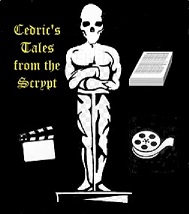









Horror Express is one of those movies that comes heart-breakingly close to being a great horror film but doesn't quite make it. The storyline stretches credulity, but it's engaging enough to suspend disbelief for 88 minutes. There's a mystery, a monster, and murder. Horror Express is a mix of science fiction and terror that pits an alien entity against science, law enforcement, the military and the Church.
The cast is solid; Christopher Lee and Peter Cushing topping the bill, with Telly Savalas and Sylvia Tortosa as their costars. Alberto de Mendoza, Julio Pena, and Alice Reinhardt round out the bill with a secondary cast of journeyman Spanish actors tricked out to look like Russians. You'll notice that the Russian police officers don't say much of anything, and neither do the soldiers under Kazan. I guess Spanish actors have difficulty with the Russian accent.
Christopher Lee delivers a good performance as the very English Professor Saxton, suitably outraged by foreign incompetence and arbitrary authority. Teamed once again with Lee is Peter Cushing, who was reluctant to do the film because of the recent death of his wife. Lee persuaded Cushing, however, and the result is his credible performance as Saxton's rival, Doctor Wells.
Potboiler actress Sylvia Tortosa keeps her clothes on for a change as she takes the role of Countess Irina Petrovska, the classic Gothic damsel in distress, and Telly Savalas plays the bullying Captain Kazan, a Russian military Commander in a performance that critic Alan Frank describes as "more like Kojak than Cossack." When it comes to scenery chewing, however, the award for Horror Express goes to Alberto de Mendoza for his role as the fanatical priest Father Pujardov. de Mendoza pushes overacting so far around the bend that it circles back into the realm of acceptability. Pujardov also makes me question whether the Orthodox priesthood has an ecclesiastical taboo against using a comb.
The year of the action is ambiguous, but the uniforms and costuming for the passengers seem to be in keeping with the fin de siècle era. To turn the Spaniards into credible Siberian Russians, the film uses more facial hair per capita than most werewolf movies I've seen.
The recurring musical theme, composed by John Cicadas includes the haunting minor key melody whistled by the baggage master and later by the creature, an early hint as to what's happening in the movie.
Let's be highbrow for a moment. The train plunging through the darkness and cold of the Siberian winter becomes a microcosm of Earth hurtling through the dark and cold of space and the people on the train represent diverse humanity from all stations uniting to face a threat from beyond. Did Bernard Gordon have this in mind when he produced Horror Express? Let's be charitable and say "maybe."
I have a fondness for Horror Express because it is a good example of what fright film making was all about before the age of CGI. Everything you see is "on camera," filmed from actual physical subjects. I learned long ago that the best special effects cost less than five dollars because they rely on ingenuity, patience, and work.
Saxton's reanimated creature, the possessed ape-man, is a fearsome monster, an atavistic creature that prods at the collective unconscious. Fernando Florida is credited with the makeup, including the eerie effect of the white eyeballs of the creature's victims, which look like cooked egg white and the glowing red eyes of the alien entity in its succession of hosts.
To present the illusion of a moving train, pulsing fans were apparently used to blow air to move the curtains and decorative fringe at the windows of the cars. But at the same time, the wine in the glasses at dinner doesn't tilt a degree. A more extreme example is the swaying overhead lamp in the baggage car when Doctor Wells is performing the autopsy on the baggage master. I suppose it's too much to expect the passengers to all sway when they walk through the corridors of the moving rail cars. Inside, the cars seem stable, but outside on their platforms, they rock like an unbalanced washing machine.
Stephen Jones writes that Horror Express was "apparently only made because the producer owned the model train left over from Nicholas and Alexandra" filmed the year before. Instead of resorting to fades or jump cutting from scene to scene, Director Eugenio Martin resorts to inserting footage of the train rolling through the snowy darkness, presumably to remind us where we are.
After all the ascending action toward the climax, the train plummets over a cliff, regrettably showing the underside of the locomotive to be hollow, running the mood over the cliff along with it. It is sad that the scene couldn't have been shot a few more times from different angles to preserve the illusion of reality.
Despite this cinematic sin, Horror Express entertains. Its plot offers an intriguing premise laced with cringe-inspiring horror, a movie I enjoy and appreciate every time I watch it.
Fright on!
 Click here to return to Cedric's Tales from the Scrypt.
Click here to return to Cedric's Tales from the Scrypt.
 Click here to watch our introductory video.
Click here to watch our introductory video. Click here to access full episodes of the show.
Click here to access full episodes of the show.
 Click here to access the Castle denizens' photo gallery.
Click here to access the Castle denizens' photo gallery.
 Click here to access our personal appearance calendar.
Click here to access our personal appearance calendar.
 Click here to access X-Ray Dead, our house band's Facebook page.
Click here to access X-Ray Dead, our house band's Facebook page.
 Click here to access The Castle Vamporium, our merchandise site.
Click here to access The Castle Vamporium, our merchandise site.